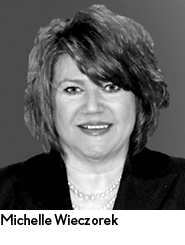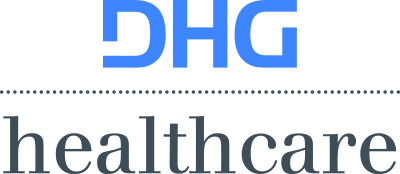DHG Healthcare: Optimizing CDI for Bundled Payment Arrangements
As hospitals and health systems pursue bundled payment arrangements, what gaps exist that limit organization success?

In this article, Michelle Wieczorek, senior manager, subject matter and consulting lead for CDI Services discusses strategies for improving clinical documentation within bundled payment arrangements. DHG Healthcare is a sponsor of HFMA’s Value Based Healthcare Innovation Council (VBHIC).
Unlike traditional fee-for-service models that reward volume and treat each healthcare encounter as a discrete and separate event, bundled payment arrangements are rooted in a population health approach where the focus is on the beneficiary’s targeted disease process and how it is managed across settings and encounters.
With the shift from fee-for-service to bundled payment, healthcare organizations have seen several gaps emerge. One of the most common relates to accurately identifying patients who fall into a bundled payment contract within a specific time frame. Legacy clinical documentation improvement (CDI) programs typically calibrate initial CDI review so it occurs within the first 48 hours of the patient’s stay. Should the individual fall within a bundled payment program, however, this timing is often too late for case management to intervene with a clinical path for managing the patient. A retrospective approach does not work well with bundled payments because the working DRG assignment is a key trigger for implementing a defined clinical pathway, which may include specialized discharge plans that involve post-acute care settings and patient education for care continuity and readmission avoidance.
Another frequent gap relates to appropriate risk adjustment estimation. The inpatient hospital must understand the impact of diagnoses that may not affect the MS-DRG assignment but will have some impact on the individualized target price for a patient in a bundled payment. Because that risk adjustment measurement is taken 90 days prior to the clinical episode being triggered, it forces the organization to consider the need for deep diagnosis coding across the organization, which is anywhere these hierarchical condition categories (HCCs) are eligible for inclusion, including the emergency department (ED), physician offices and clinics.
Why do organizations struggle to close these gaps? What are some key roadblocks standing in the way?
There are two main reasons why organizations wrestle with these problems. One is that hospitals are 24/7 operations, while CDI programs typically follow a 9-5, Monday-Friday model. This leads to CDI employees playing catch up with weekend admissions on Monday morning. Not only does this retrospective method delay assigning patients to the bundled payment model, organizations run the risk of incorrectly classifying the patient stay in its entirety.
Another roadblock is the lack of knowledge about HCC codes in inpatient settings because these codes are often perceived as an outpatient-only coding requirement for Medicare Advantage patients. Even though a healthcare organization’s physicians may be familiar with the codes, they may not have ways to capture them in their inpatient documentation workflow because they have not been a priority for hospitals and health systems.
What are some strategies for clinical documentation in the context of bundled payment?
There are several strategies that can set the stage for CDI success. First and foremost, an organization should consider reengineering its workflow to accommodate all fee-for-service Medicare patients, so that there is a working MS-DRG on the record within 24 hours of admission. How an organization accomplishes this goal can look very different depending on the facility. For instance, some hospitals will add full-time staff to weekend shifts while others will train ED case managers to assign the working DRG as soon as the patient arrives at the hospital. Other options include having CDI staff work remotely over the weekend to support working DRG assignment seven days a week.
Next, an organization should consider closely assessing its workflow and documentation capabilities, looking for opportunities to better capture HCCs to more accurately adjust for risk. There could be multiple reasons why an organization might be deficient in HCC capture. For example, even though physicians may be documenting a chronic condition, it may not be coded because it is not recognized as important by the coder. Or, perhaps providers are documenting chronic conditions that are not specified enough for HCC capture and require a query. Or, physicians may not recognize the chronic conditions at all in their documentation and require some education on which HCCs are common in their populations and need to be captured. By closely reviewing the end-to-end clinical documentation process along with medical records, an organization can determine what is being left unrecognized in the risk adjustment process. It can then design a plan for addressing the root causes of existing gaps and improving HCC capture in the bundled payment population. Tactics can range from providing further education to setting up pre-bill review programs that improve MS-DRG accuracy and HCC capture. Organizations may also want to optimize their electronic health record to improve HCC capture through various pick lists and templates. By making it easier for physicians to select the right HCC codes, an organization can support more accurate documentation. To help with these efforts, hospitals and health systems may wish to work with an external resource that is highly knowledgeable in both CDI and bundled payment arrangements.
What role can an outside expert play in helping with gap closure?
Historically, hospitals have focused on obtaining revenue through inpatient admissions, measuring success by monitoring the accuracy of DRG capture and the growth of the Case Mix Index (CMI). However, as healthcare delivery models shift to outpatient settings and reimbursement methodologies include quality performance measures, mid-revenue cycle processes must be modernized. An outside expert can offer objectivity in assessing an organization’s current state and provide guidance in developing a plan.
Oftentimes, hospitals and health systems can feel overwhelmed by the rapid pace of change and growing complexity of healthcare reimbursement methodologies, so they stick to what has worked in the past. Due to the continued movement to value-based reimbursement strategies by the Centers for Medicare & Medicaid Services (CMS) and commercial payers, these traditional tactics may not work. An external resource can help organizations identify when they have reached the “tipping point” — where the population of healthcare beneficiaries covered by alternative payment models surpasses fee-for-service. They can also provide critical insights that the health system may lack, helping the organization strategically prioritize remediation efforts to tackle antiquated practices without compromising current performance.
A knowledgeable resource can also assist organizations in breaking down internal silos and enhance collaboration across settings to realize greater success in modern reimbursement methodologies, which require robust cross-continuum communication. This resource can facilitate change through project management and foster the development of expertise through targeted education. Not only can it deliver content, it can serve as external validation for process improvement and reinforce what needs to be done — something that an organization’s internal experts may struggle to provide. Due to the outside resource’s depth and breadth of experience, it can help organizations be more efficient in improvement, targeting areas with which the organization may not be familiar but are critically important for long-term success.
How can hospitals and health systems generate buy-in for necessary change?
It is important to engage key stakeholders both within the healthcare system and across care settings. Most current processes and infrastructure, including technologies, were established within a fee-for-service environment. Success under bundled arrangements requires greater communication, compromise, collaboration and an integrated approach. All key players should understand how success under bundled payments is measured; how they can contribute to these initiatives; the potential benefits of these arrangements; and the impact these programs have on patient care.
About DHG Healthcare
DHG Healthcare, the national healthcare practice of Dixon Hughes Goodman, LLP, is ranked by Modern Healthcare as the tenth largest, privately-held consulting practice in the nation. Spanning the broader healthcare ecosystem, clients share the common challenge of successfully navigating the unparalleled amount of federal, state, and market-driven reform underway in the U.S. Our services in the consulting, assurance, and tax domains are purposefully designed to assist clients in their journey to risk capability. Creating institutional value is a critical focus as our clients define their strategic approach, execute on transformational plans, and manage the financial health and sustainability of their organizations. Learn more about the service and people of DHG Healthcare at www.dhg.com/healthcare.






